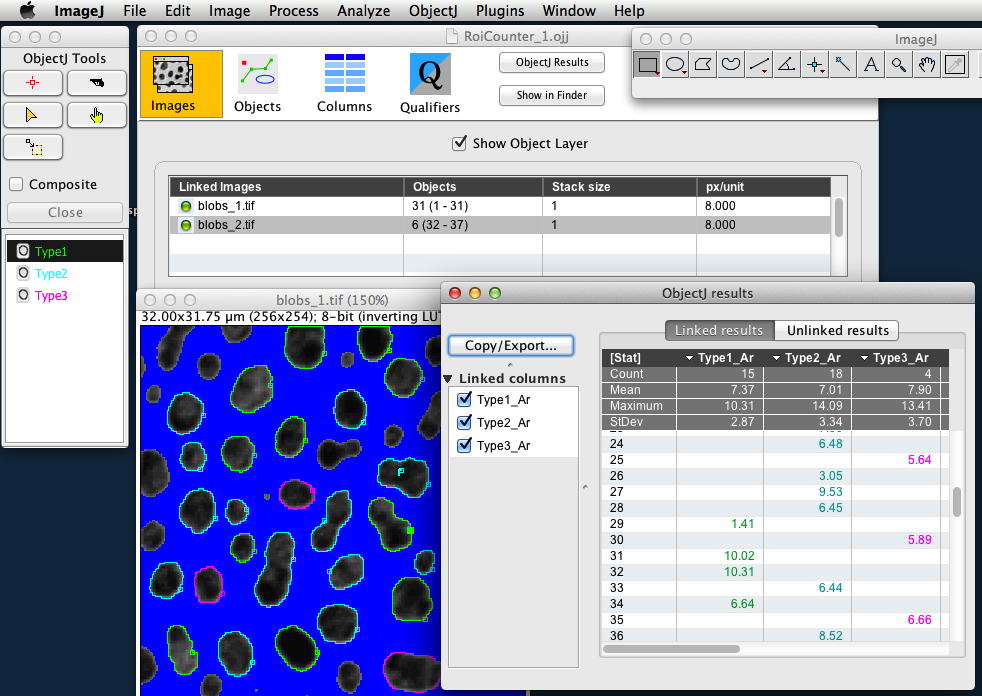

14 ROI drawing tools are found on the left side of the ImageJ tool bar (A). tight_layout () glue_fig ( 'fig_rois_drawing', fig )įig. Only pixels within any ROI we draw will be included in the calculations when we run Analyze ‣ Measure.įig = create_figure ( figsize = ( 3, 3.5 )) show_image ( 'images/roi-toolbar.png', title = "Tool bar", pos = 211 ) show_image ( 'images/roi-glasses.png', title = "'Image + ROI", pos = 212 ) plt. Regions Of Interest (ROIs) can be used to define specific parts of an image that should be processed independently or measured. The two options that I think you should avoid can both result in something unexpected being measured if you don’t know (or have forgotten) that either was selected under Analyze ‣ Set Measurements….įortunately, they are not really needed if you master the art of generating, managing and transferring regions of interest between images. It sounds weird, but it’s intended for cases where you have two corresponding images one in which you can identify a region to measure, and one that contains the pixel values you should measure. Redirect to – measures a different image from the one that’s selected. Limit to threshold – restricts the region being measured according to any threshold that has been set don’t do this routinely, instead convert your threshold to a ROI and use that instead. Stack Position – includes the 2D plane that has been measured in an image with more dimensions. Some options within Analyze ‣ Set Measurements… are so universally useful that they should pretty much always be set.Ĭonversely, some options are manifestly confusing and dangerous and should be used rarely – or not at all.Īrea, Mean gray value, Standard deviation, Min & max gray value – basic summary values This also has an extra Results entry in its menu bar that other tables lack.

Nevertheless, any new measurements you make with the Measure command will only be added to the original, official table.
#Roi imagej how to#
Is there an easy way to do this, or am I doing something wrong?Īnother option is, I am planning to record this in a macro, since I do know the Total Wafer Area, I assume I could do some math to divide the Total void Area by the known wafer Area to get the Wafer % Voiding number I'm looking for outputted through the macro, but would need some help in how to do that.Īny help with this would be greatly appreciated.The ‘One True Results Table’ & its impostersĪ small idiosyncrasy to be aware of is that, as far as ImageJ is concerned, there is only ever one ‘official’ results table – the one with the title Results.ĭifferent, similar-looking tables can be created by different commands, or by duplicating an existing results table with File ‣ Duplicate…. I would like it to tell me the % of Voiding in the wafer, which would be Total Void Area\ROI Area(wafer area). But the %Area column # is low, I think because it's using the Total Area\the entire Image area. I then run the Analyze Particles routine, it surrounds the voids well and in the summary table, the Total Area column seems to come out to the correct # for Total Void Area. I then do a Threshold Color, to highlight only the voids. I have an image of a 4" diameter wafer with voiding.


 0 kommentar(er)
0 kommentar(er)
